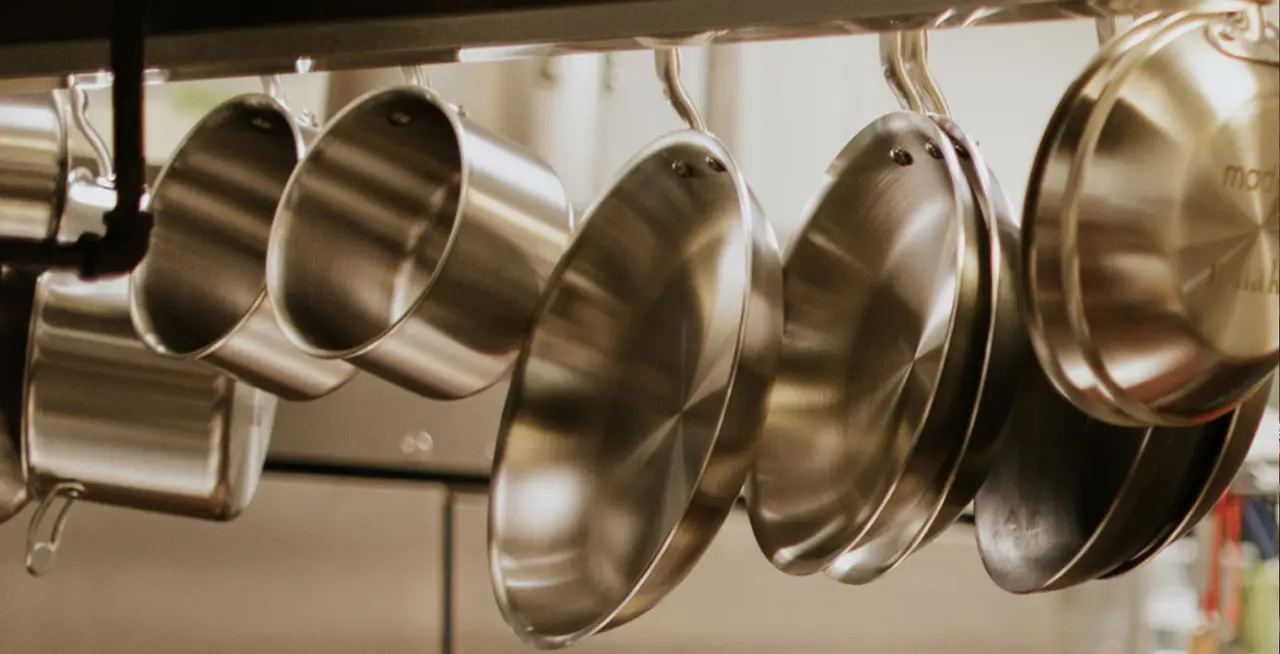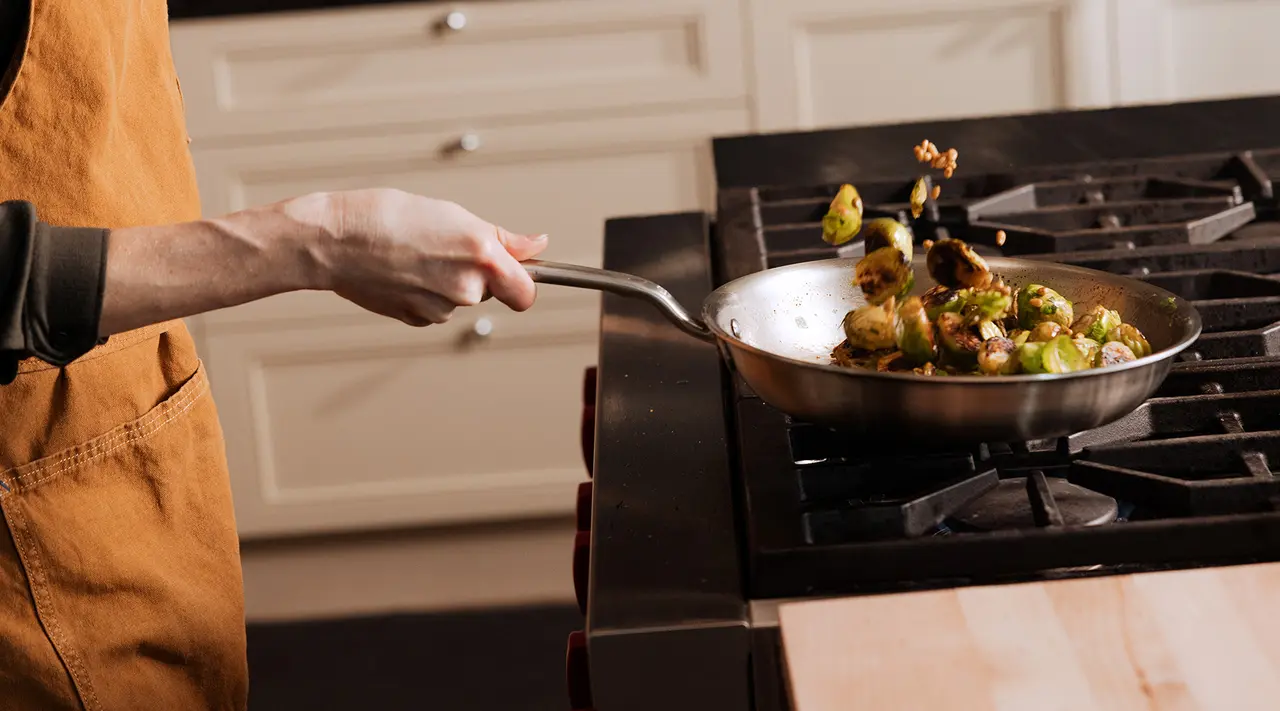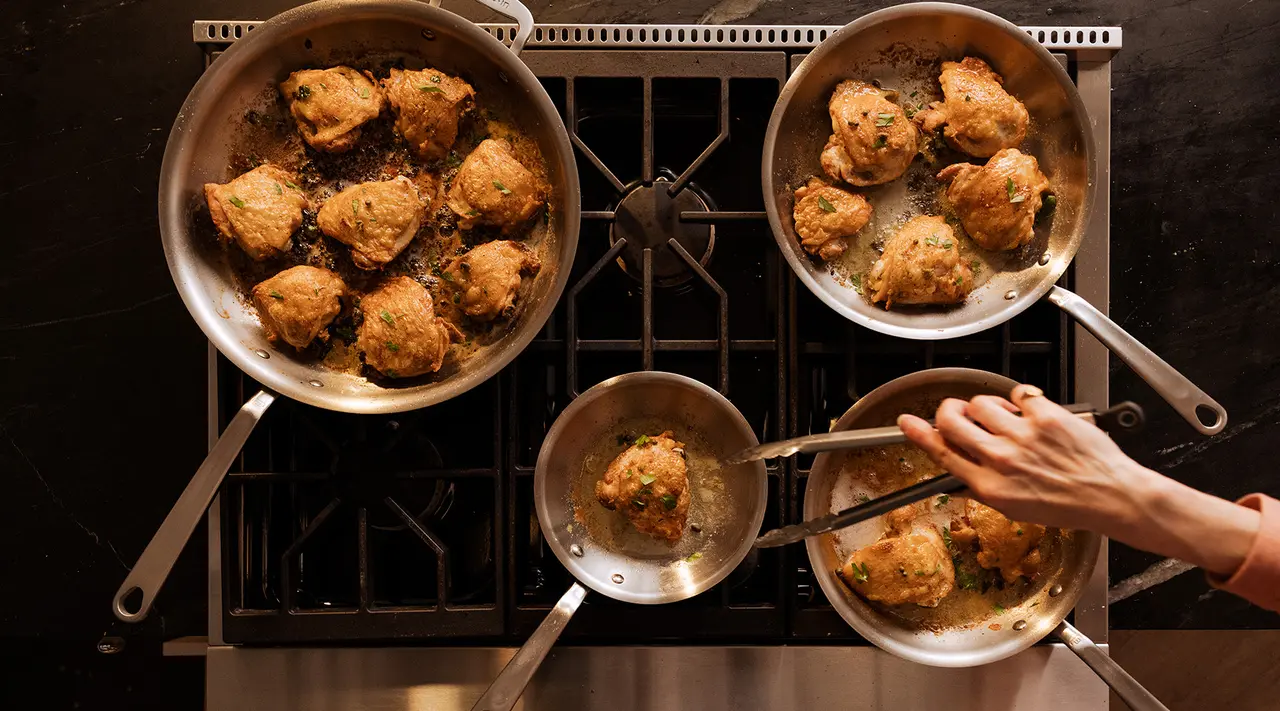When shopping for new cookware, you'll likely come across options for both aluminum and stainless steel cookware. While they look aesthetically similar, that's where comparisons end.
The significant differences between aluminum and stainless steel cookware lie in their durability, conductibility, and reactivity abilities—namely, how much better stainless is in all of these categories. These three qualities are essential for long-lasting, even-heating cookware. Keep reading to decide which one is best for you.
What Is Aluminum Cookware?
Generally inexpensive and easy to produce, this popular material comes in a range of shapes and sizes, from frying pans to stock pots.
Advantages of Aluminum
- Lightweight: Aluminum cookware is extremely lightweight, which means easy maneuverability around the stove and handling in and out of the oven.
- Heat Conduction: Aluminum is a wonderful conductor of high heat, which is why it’s commonly used as a cladding material in the production of stainless steel cookware (including our Stainless Clad Collection). Aluminum can get very hot, very fast, making it great for recipes that require high temperatures.
- Price: Aluminum cookware is relatively inexpensive compared to other materials since it doesn’t feature a cladded construction commonly found in stainless steel. This makes producing aluminum inexpensive, as you don’t need as much metal to manufacture cookware pieces.
Disadvantages of Aluminum
- Durability: Aluminum cookware is thin, which means it can warp very easily, and is more prone to damage.
- Reactive: Aluminum is a reactive material, meaning it reacts with acidic ingredients like wine, citrus, and tomatoes and imparts a metallic taste. If you frequently cook high acid foods, we recommend reaching for a nonreactive pan instead.
- Not Induction Compatible: Aluminum cookware is not compatible with induction cooktops, limiting its usability.
Stainless Steel Cookware

The backbone of professional kitchens all around the world, stainless cookware is a similarly great foundation for home kitchens. Similar to aluminum cookware, it's an incredibly versatile material that can be used to sear, sauté, fry, boil, poach, and most other cooking tasks.
Advantages of Stainless Steel
Here are some of our top reasons why stainless is one of the best options to have on hand.
- Durability: As one of the most durable cookware materials, stainless is pretty indestructible if you follow the proper care. To demonstrate, our Stainless Clad Collection is regularly put to the test—high heat and all—in professional kitchens.
- Heat Conduction: Stainless cookware is an excellent heat conductor, meaning there's no uneven heating or hot or cold spots—heat is evenly distributed across the surface of the pan, so your ingredients cook to the same temperature at the same time.
- Safe on all Cooktops: Stainless is safe to use on all cooktops and cooking surfaces, whether induction, gas, or electric.
- Non-Reactive: Stainless steel is a completely nonreactive, meaning you can cook any and all ingredients in it without the worry of it leaching metals into your food.
Considerations of Stainless Steel
Stainless cookware has some considerations, but we firmly believe the advantages outweigh the few downsides.
- Price: Stainless steel cookware is generally more expensive than its aluminum counterpart. That said, it outlasts aluminum and when properly cared for, can last decades—so we think the investment is well worth it.
- Weight: Stainless steel can be heavy due to its cladded composition—though the heftiness is usually a sign of durability and is a worthy trade-off.
Aluminum vs. Stainless Steel: Which Is Better?

Stainless steel cookware is the better choice between these two materials, as it’s more durable, lasts longer, has better heat retention, and overall provides a better cooking experience.
While stainless may be more expensive than aluminum, the investment is well worth it. One set of good stainless cookware can last you a lifetime when properly cared for, whereas aluminum will wear out much faster and, typically, need to be replaced often.
Luckily, our Stainless Clad Collection doesn't make you choose. We clad each piece in our collection with aluminum, ensuring pans with superior heat conduction and control.
Ready to Shop?
Now that you know the difference, it's time to invest in some quality stainless. Our Stainless Clad Collection features premium 5-ply composition, is made in Italy and the U.S., and is globally trusted by professional chefs. See the difference chef-tested, home cook-approved cookware can make in your routine.
























